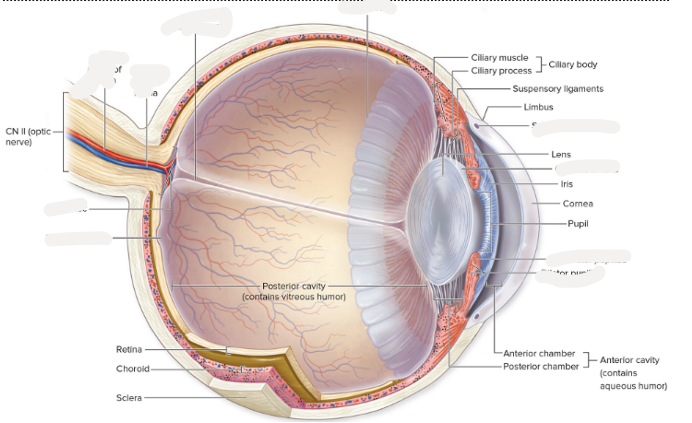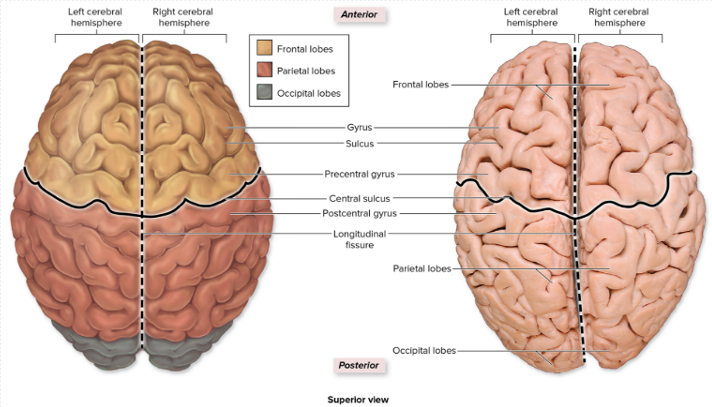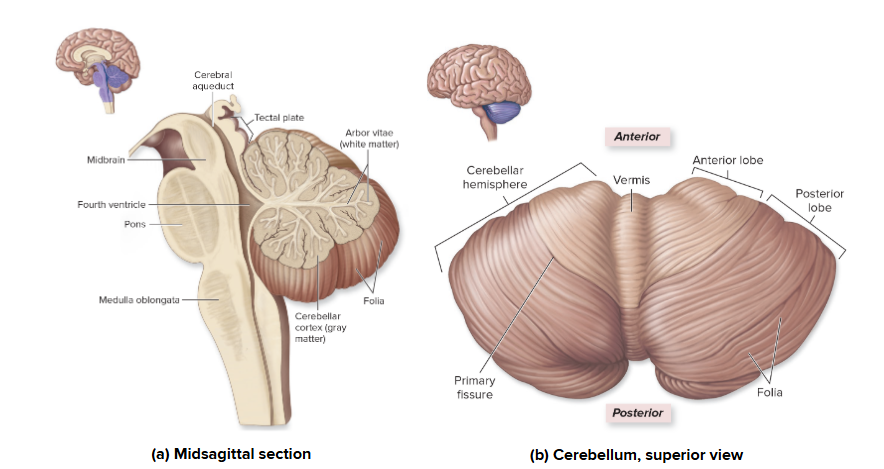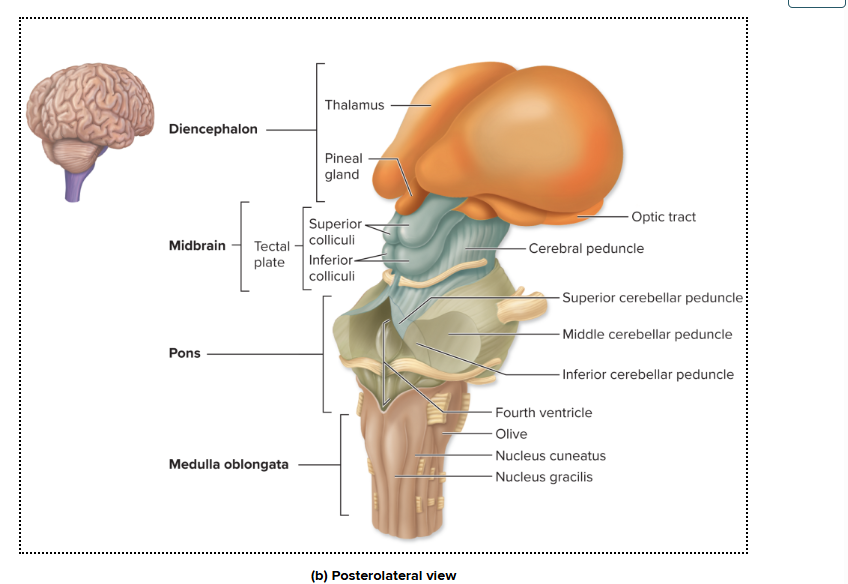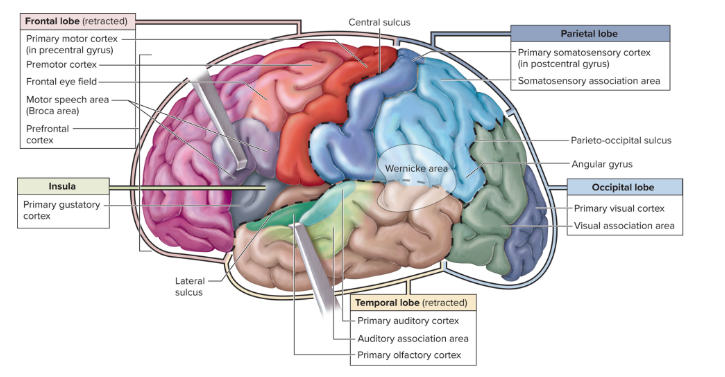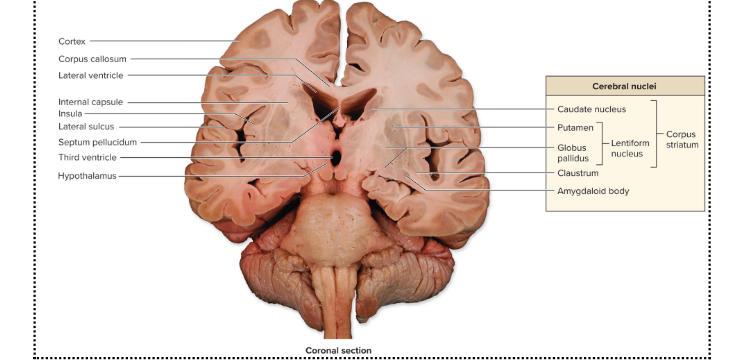cow eye and sheep brain
1/64
There's no tags or description
Looks like no tags are added yet.
Name | Mastery | Learn | Test | Matching | Spaced |
|---|
No study sessions yet.
65 Terms
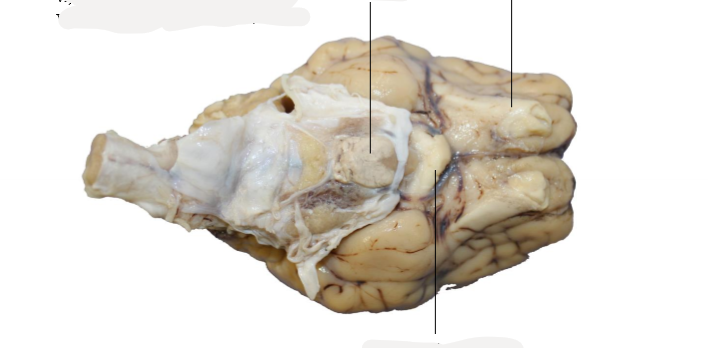
pituitary gland
olfactor tract (cn 1)
optic chiasm (CN 2)
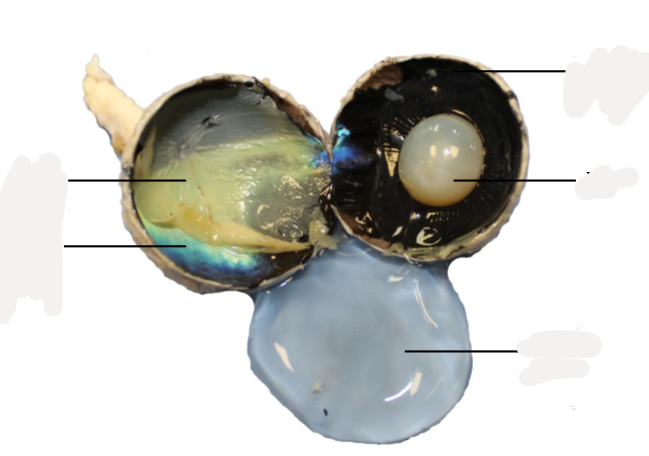

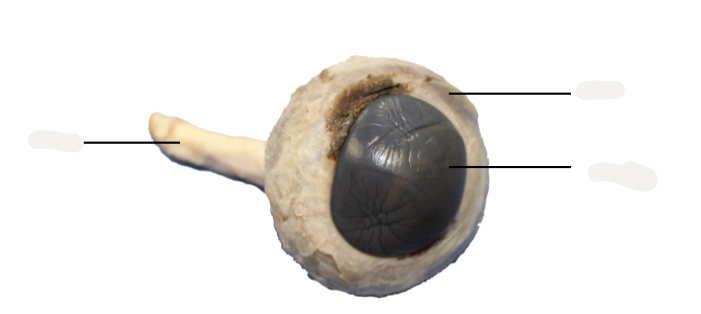
Right and left cerebral hemisphere
separated by longitudinal fissure
corpus callosum
mass of transverse fibers, connects 2 hemispheres
frontal lobe
judgement, concentration, and foresight (ability to think before acting); personality
1- olfactory
sense of smell
2- optic nerve
sense of vision
3- oculomotor
motor control eye movement
4- trochlear
motor nerve to one eye muscle
5- trigeminal
sensation of cornea, scalp, forehead, face, and teeth; motor to muscles of mastication
6- abducens
motor nerve to one eye muscle
7- facial
motor to muscles of facial expression; tatse from anterior 2/3 of tongue
precentral gyrus
primary somatic motor corte
parietal lobe
logical reasoning (math, problem solving) understanding speech
post central gyrus
primary somatic sensory cortex
temporal lobe
interpret and store auditory and olfactory sensations; understanding speech
occipital lobe
perception of visual stimuli
central sulcus
separate front lobe from parietal lobe
lateral sulcus (fissure)
separates frontal and parietal lobe from temporal lobe
pineal gland
secretes melatonin which plays role in circadian rhythm
t
thalamaus
relay center for all sensory information coming into brain (except olfactory); information filter
third ventricle
part of thalamus
hypothalamus
regulates body temp, hunger, thirst, sleep, sex, and emotional master endocrine gland
cerebral aqueduct- part of brain stem, specifically midbrain
passageway connecting 3rd and 4th ventricles
superior colliculi- part of brain stem, specifically midbrain
visual reflex center
inferior colliculi- part of brain stem, specifically midbrain
auditory reflex center
cerebral peduncle- part of brain stem, specifically midbrain
motor tracts decend from primary motor cortex through these to spinal cord
pons
bridge connecting cerebrum to cerebellum
fourth ventricle
medulla oblongata
regulation center for respiration and cardiac function
cerebellum (little brain)
regulation of muscle tone, coordination of motor activity and maintanence of balance and equilibrium
part of cerebellum know where these are
right and left cerebellar hemispheres
vermis
arbor vitae- white matter of little brain
folia- folds in brain
ventricles of brain
lateral ventricle
interventricular foramen
third ventricle- with interthalamic adhesion
cerebral aqueduct
fourth ventircle- diamond shpaed ventirlce located anterior to cerebellum
central canal (of spinal cord)
choroid plexus- tissue that manufacture CSF
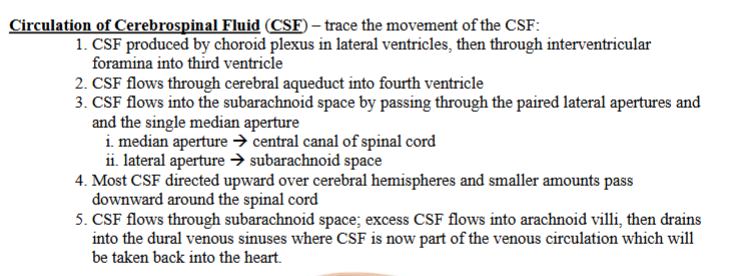
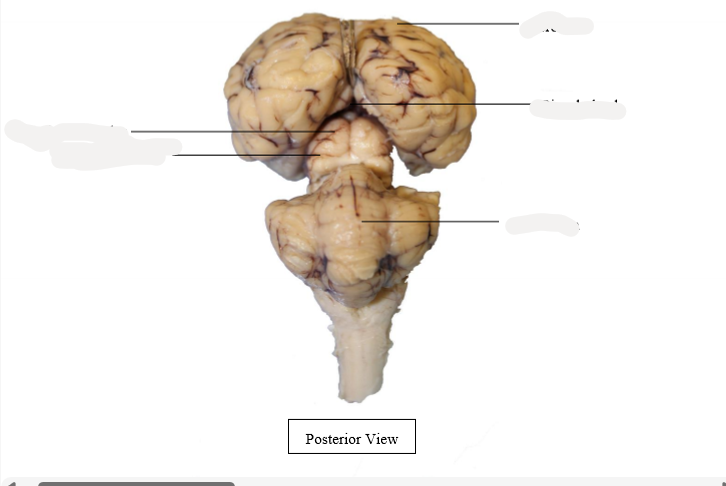
cerebrum
pineal gland
cerebellum
superior colliculus
inferior colliculus
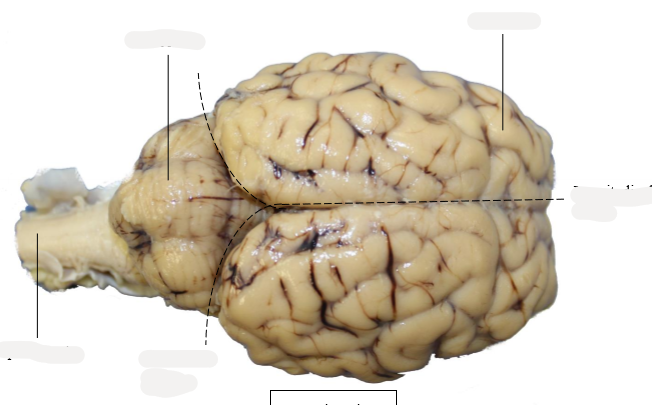
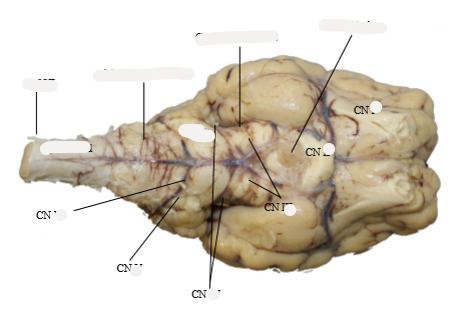
infundibulu,
cerebral peduncles
medulla oblongata
spinal chord
pons
Cranial nerve 1-7
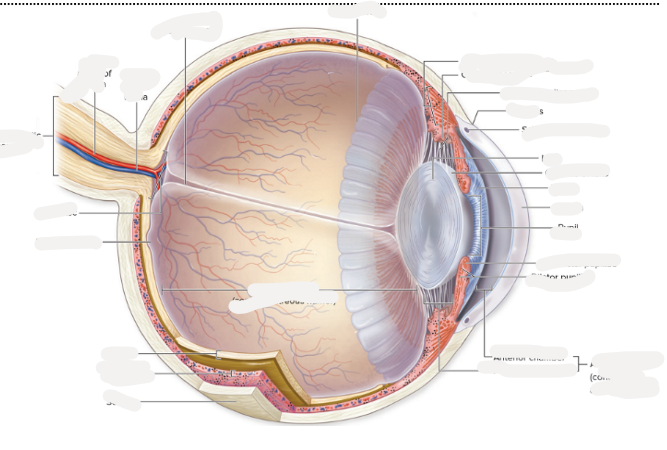
eye
fibrous tunic
cornea
sclera
vascular tunic
choroid
ciliary body
iris
pupil
retina
lens
optic nerve (cn 2)
cavities of eye
anterior cavity-has aqueous humor
anterior chamber
posterior chamber
posterior cavity
